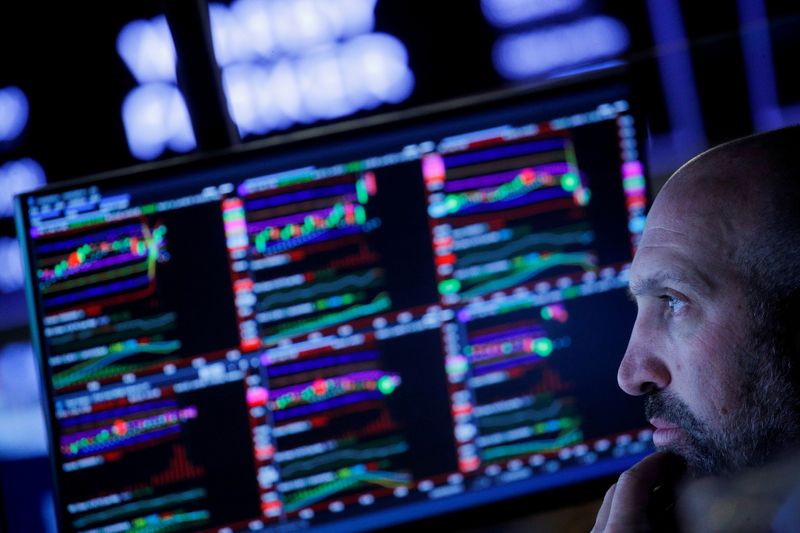By Jamie McGeever
ORLANDO, Fla. (Reuters) - If hedge fund plays on the dollar and U.S. Treasuries are a weather vane for investors' risk appetite and the economic outlook more broadly, then hold on to your hats.
Chicago futures markets data show they have built up their largest long position in 10-year U.S. government notes in four years and increased their multibillion-dollar bet on a stronger greenback to its biggest in 18 months.
These trades - banking on low long-term borrowing costs, a flatter yield curve and a firmer dollar - indicate concern over future growth prospects, a strong desire for safety or lack of concern over inflation. Or all three.
Data from the Commodity Futures Trading Commission show that in the week to Sept. 28 hedge funds and speculators ramped up their net long 10-year Treasuries holdings by almost 120,000 contracts to 181,207 contracts, the most since October 2017.
This is the first glimpse into how hedge funds are repricing interest rate risk since the Federal Reserve's Sept. 22 policy meeting, which opened the door to an earlier and more aggressive tightening process than previously anticipated.
Funds' rush into 10-year Treasuries completely reversed their selloff ahead of the meeting, and coincided with a deterioration across financial markets as investors grappled with the prospect of interest rates rising next year.
Reflecting the Fed's hawkish tilt, speculative accounts more than doubled their net short two-year Treasuries futures position to 62,829 contracts.
So far at least, this bet is not paying off: the 10-year yield jumped to 1.55% this week from 1.30% the day of the Fed's policy statement, and the two-year/10-year yield curve steepened by 15 basis points to 125 bps.
But the warning bells are ringing. The S&P 500 had its first 5% drawdown in almost a year and September marked the biggest monthly fall since March last year; the VIX index jumped above 20; U.S. consumer sentiment hit a seven-month low, and the near-term growth outlook is dimming.
KING DOLLAR
This is the kind of environment that favors bonds, a flatter yield curve and the dollar. On that final note, at least, funds are on a winner.
CFTC data show they increased their net long dollar holdings for an 11th straight week, by almost $2 billion to $15.3 billion. That is the largest since March last year.
The dollar strengthened for a fourth consecutive week to hit an 11-month high against a basket of currencies, boosted by rising short-term real yields, safe-haven demand and a spike in ultra short-dated bill rates due to the U.S. debt ceiling impasse.
The dollar often performs well in times of slowing growth and rising economic uncertainty. On the face of it, this appears counter-intuitive, but in the relative world of exchange rates the dollar provides safety and liquidity.
Domestic U.S. and global growth momentum is slowing. Economists at Barclays (LON:BARC) note that softening business investment is consistent with the slowing in demand amid renewed Covid-19 infections, ongoing supply constraints and a cautious consumer.
Their third quarter GDP tracker closed last week at 3.4%, suggesting further downside risks to their official forecast of 4.5%.
Right now though, of course, the hottest issue for investors is inflation. Are current elevated levels transitory, as the Fed still insists? Is a more damaging, longer lasting overshoot in the cards? And more pertinently, what will the Fed do?
For all the talk of inflation taking hold, some key inflation expectations measures offer a different perspective.
Breakeven inflation rates across the curve have popped higher since the Fed's Sept. 22 meeting, but they are still well below where they were earlier in the year. Inflation-protected Treasury bonds, or TIPS, have gone down in price since then too.

Goldman Sachs (NYSE:GS) economists just raised their 2021 forecast for core PCE inflation - the Fed's preferred measure - to 4.25% from 3.9%. But their end-year projections for the following three years are 2.00%, 2.15% and 2.20% - hardly runaway inflation.
This is the kind of outlook that suggests current price pressure will indeed prove transitory, which hedge funds and speculators - at least for now - appear to be buying into.